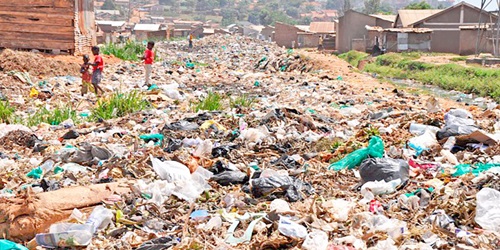The human right to safe environment
Galamsey, a word which has come to describe the illegal mining activities that have been wreaking havoc on our environment, has been trending in recent times in Ghana.
This column has been in on the act too and has gone as far as positing that the practice has become an existential problem. As indicated in the previous write-up, the object of this article is to explore the parameters of the emerging human right to a clean, healthy and sustainable environment.
In the face of the wanton destruction of the environment, the recognition and implementation of the right to a clean, healthy and sustainable environment is crucial to the protection of human life, well-being and dignity – the original ethos of human rights law.
Even though activists and stakeholders have been agitating for the right to a healthy environment, the concrete terms were achieved at the United Nations Conference on the Human Environment, held in Stockholm, Sweden, from June 5-6, 1972.
The Stockholm Declaration urged the member states of the UN to reduce air, land and water degradation.
The Declaration consists of 26 Principles, and Principle One is widely seen as the first step in promulgating a right to a clean, safe and sustainable environment.
Another milestone towards the evolution of the right to a safe, clean and sustainable environment was the Rio de Janeiro Declaration after the 1992 United Nations Conference in Brazil. Principle One of that Declaration stated:
“Human beings are at the centre for sustainable development. They are entitled to a healthy and productive life in harmony with nature”.
But by far, the greatest stride made in the evolution of the right to a safe, clean and healthy environment was the adoption by the United Nations General Assembly on July 28, 2022, of a resolution declaring that everyone on the planet has a right to a healthy environment.
This resolution was largely based on a similar text adopted by the Human Rights Council of the UN in October 2021, which called for efforts on the part of UN member states to intensify the achievements of the right to a healthy environment.
The right to a safe, clean and sustainable environment at a minimum includes the right to enjoy clean air, safe and sufficient water, healthy and sustainably produced food, a safe climate, healthy biodiversity and ecosystems and non-toxic environments where people can live, work, learn and play.
Also, an important component of the right to a healthy environment is the guaranteed access to environmental education and information, public participation in decision-making and access to justice with effective remedies – all these being closely associated with the already existing rights to free expression, association and assembly.
The United Nations General Assembly (UNGA) Declaration of the right to a healthy and sustainable environment represents the beginning of the protracted struggle towards the effective realisation of the right – truly a milestone.
The right is now recognised in more than 80 per cent of all UN member states -161 out of 193 – through constitutions and legislation. It has also found its way into some regional human rights treaty bodies eg: Article 24 of the African Charter on Human and Peoples’ Rights.
In Ghana, Article 36(9) of the Constitution provides: “The state shall take appropriate actions to ensure environmental preservation for future generations”. Article 41(k) makes the protection of the environment a duty of all Ghanaians.
In addition, Chapter 21 of the Constitution provides for a Ministry of Lands and Natural Resources, which is mandated to manage sustainably Ghana’s lands, forests, wildlife and natural resources through the formation, implementation and monitoring of relevant policies and programmes.
Clearly, activists, environmental and human rights lawyers, civil society organisations and constitutional bodies, like the Commission on Human Rights and Administrative Justice (CHRAJ), can use the constitutional provisions above while leveraging the provisions and legal ambit of the emerging United Nations human right to a safe, clean and a sustainable environment.
The strategy, therefore, must be the deployment of these legal arsenals in the bringing up of test cases to the apex court of the land.
In this venture, there is no gainsaying the crucial role of our judges in coming up with innovative, almost teleological decisions that will guarantee the right and place it at the centre of the country’s fight against environmental degradation.
All is not lost in the fight to stop galamsey and it is worthwhile if we use the law to achieve environmental freedom and justice for all.



